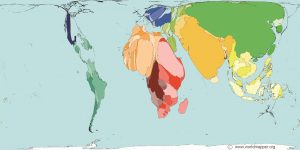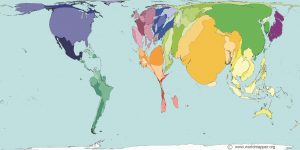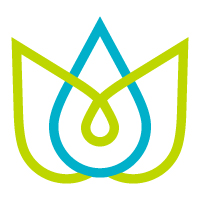There are few places where it is possible to be more unaware of global water issues than in West Michigan. Sitting on the shores of Lake Michigan in a region with ample rainfall and many inland lakes, we are water-rich in comparison to many parts of the world.
Our water abundance is amplified by living in a state surrounded by the Great Lakes, which not only provides us with a near limitless source of fresh water, but also creates the perception: Water is plentiful, so why conserve?
Millions around the world are not nearly so fortunate. Consider the Poor Water Map of the world in which countries are sized according to the proportion of people without reliable access to safe water. (See worldmapper.org for maps of this sort).

The U.S. is virtually non-existent on this map as are countries like Australia and many European countries. This makes sense when you think about it – from where you are as you read this, how far are you from a source of safe drinking water?
Compare the U.S. to the countries of Sub-Saharan Africa or to India or Indonesia, where a large percentage of the people, sometimes upwards of 50 percent, lack access to safe drinking water. “Access” typically means within 1 kilometer (a 10 to 15-minute walk); for many, their water source is much further away.
Globally, the World Health Organization estimates that 884 million people lack even basic clean drinking water service – about one in nine people. Very few of these 884 million people live in the United States; perhaps none live in West Michigan.
Now consider the Water Use Map, which illustrates global water discrepancies from another perspective, showing countries sized according to their proportion of worldwide water use.
Again, compare the U.S. to Sub-Saharan Africa. Americans use about 575 liters per person per day (152 gallons) of water for drinking, basic hygiene, bathing, laundry, and general household use. Those living in many Sub-Saharan countries average around 50 liters per person per day (13.2 gallons); the “typical” American uses more than this each day just to flush the toilet.
The World Health Organization suggests that humans need a minimum 20 liters per person per day (5.3 gallons) for drinking and basic hygiene or a minimum of 50 liters per person per day (13.2 gallons) when including bathing and laundry. Many in the world live below these “water poverty” minimums, while we use more than 10 times this amount.
Water issues are basically local in nature. If I conserve water in Holland, I don’t create more water across the ocean. Nevertheless, our use of water here in West Michigan should be understood within a global context, something that does not come naturally in our region of water abundance.
How often are we motivated by the lack of water elsewhere to limit the length of a shower, think twice about watering the lawn, or minimize the amount of time the faucet runs?
There are good reasons to conserve our local waters that are unrelated to a global comparison. To act locally and globally to address water issues, Google “household water conservation” (local) and “clean water organizations” (global) for ideas.
– Dave Van Wylen is the Dean for Natural and Applied Science at Hope College and on the Advisory Board for the Holland-Hope College Sustainability Institute.
![]() This Week’s Sustainability Framework Theme:
This Week’s Sustainability Framework Theme:
Environmental Awareness/Action: Environmental education and integrating environmental practices into our planning will change negative outcomes of the past and improve our future.
Living Sustainably is a collection of community voices sharing updates about local sustainability initiatives. It is presented by the Holland-Hope College Sustainability Institute, a joint project of Hope College, the City of Holland and Holland Board of Public Works. Go to www.hope.edu/sustainability-institute for more information.



